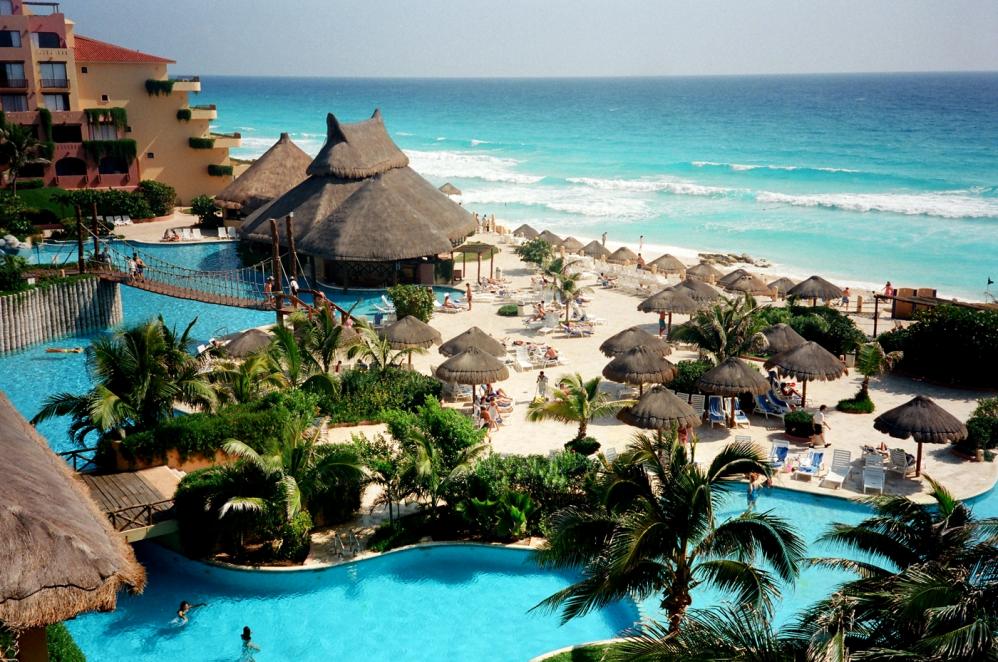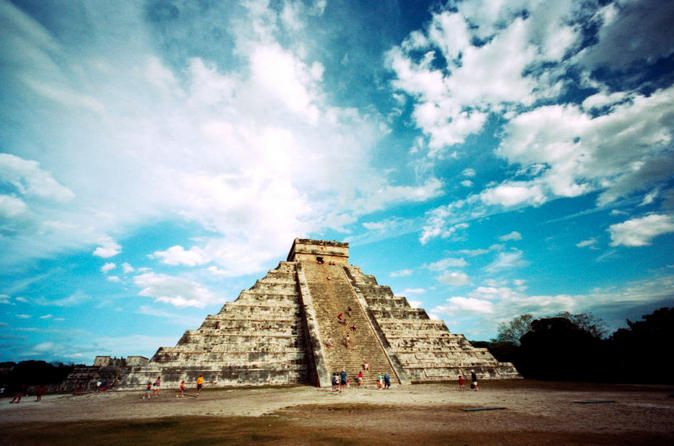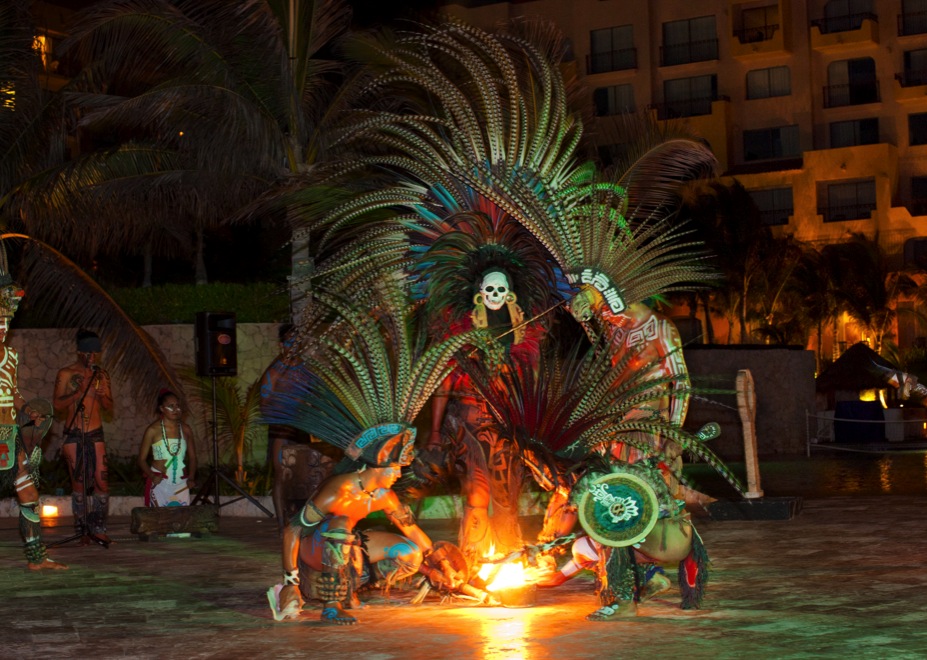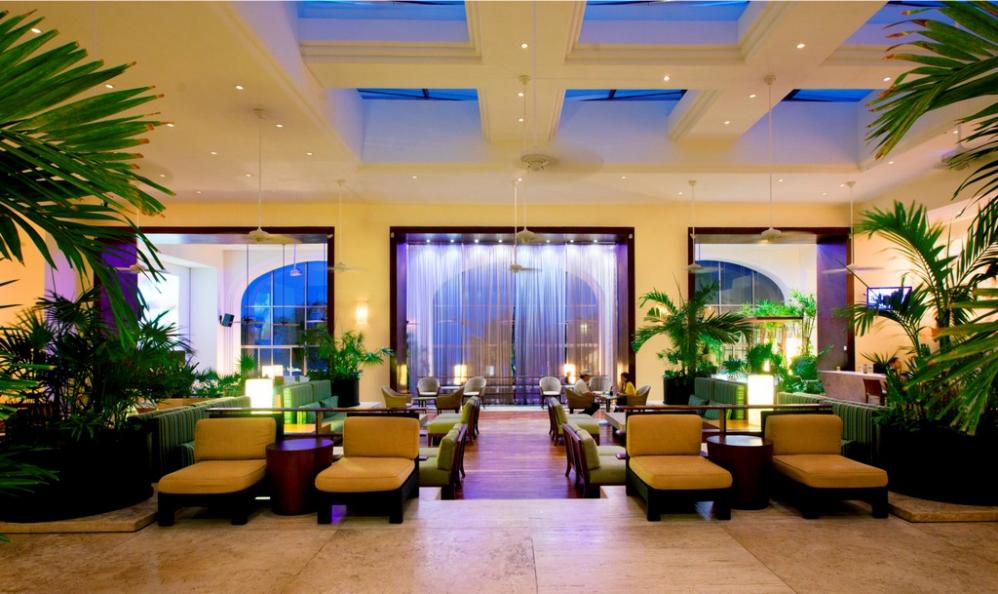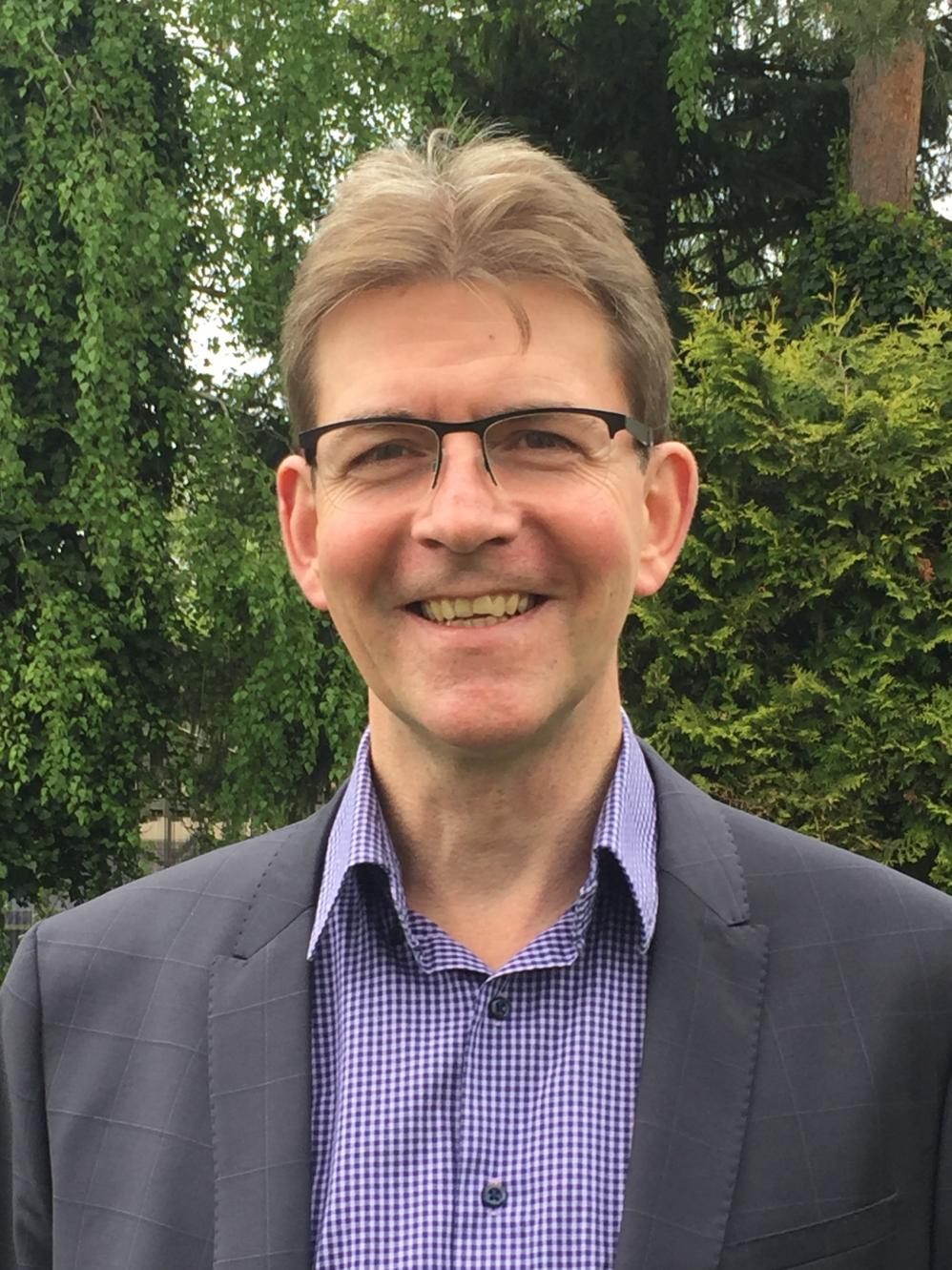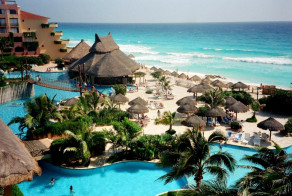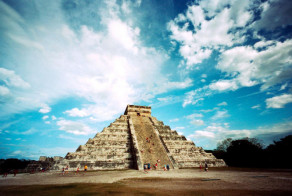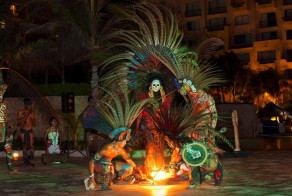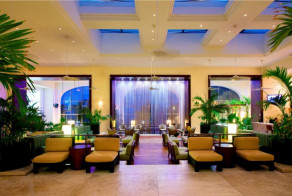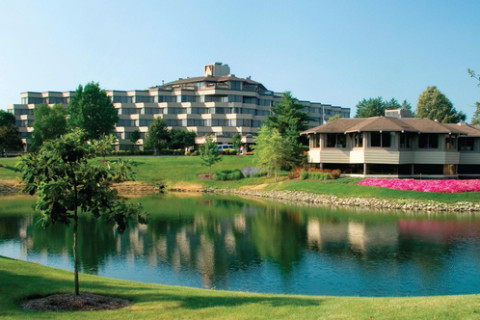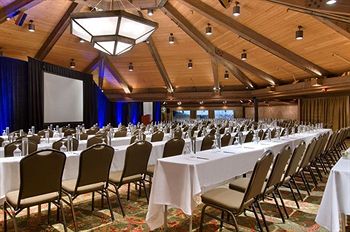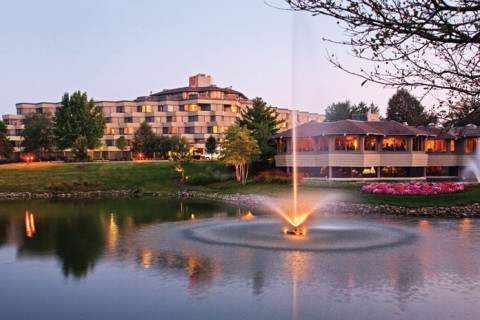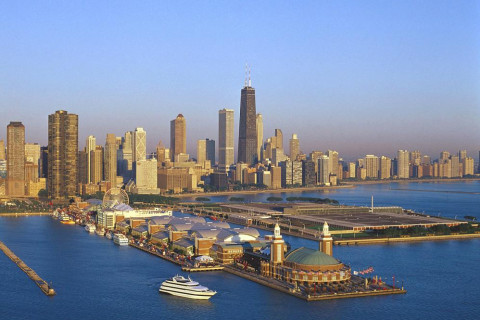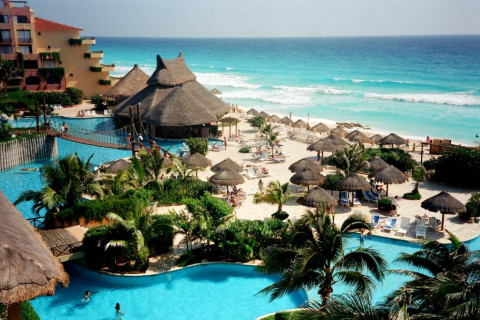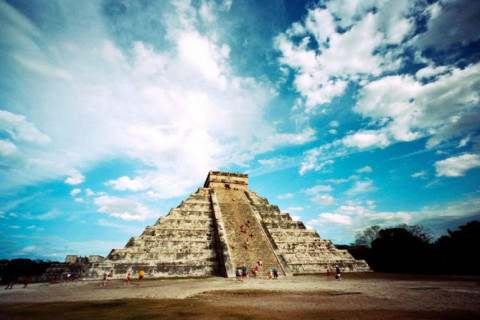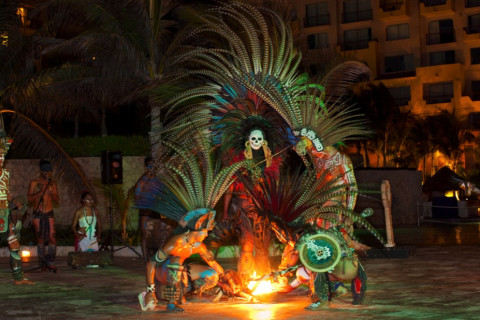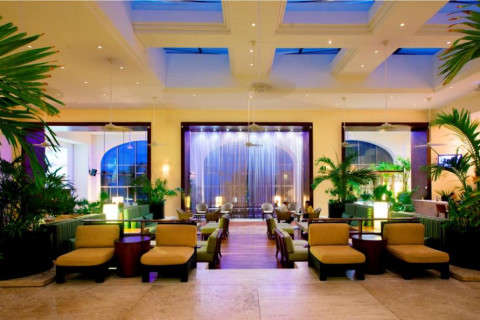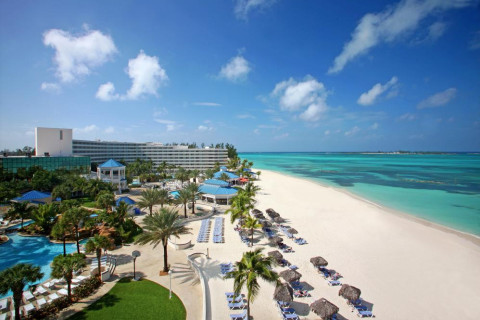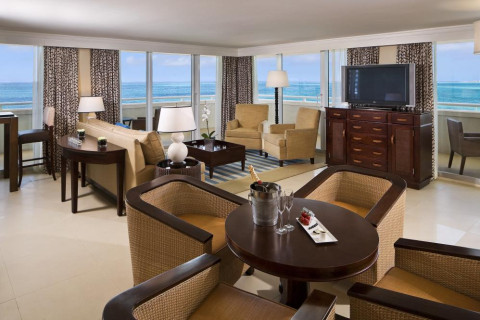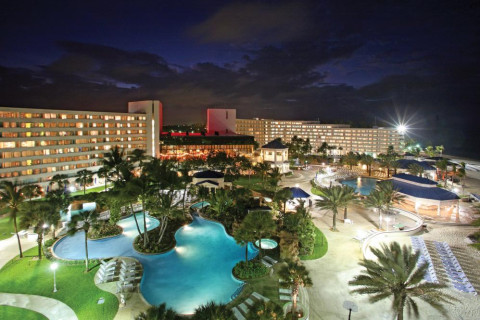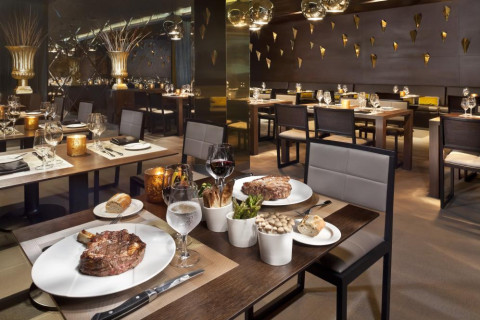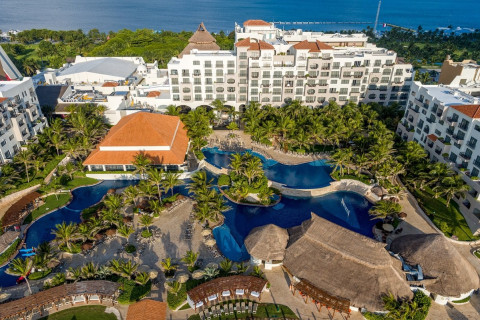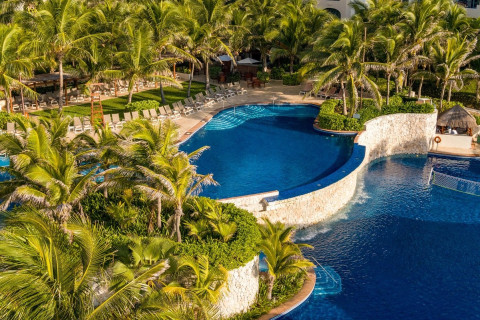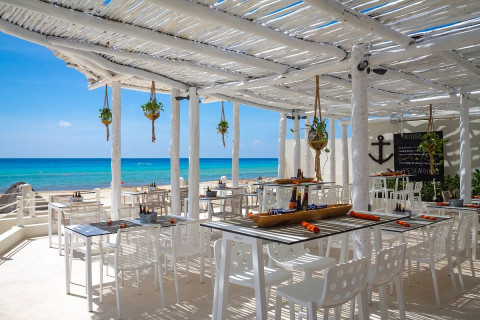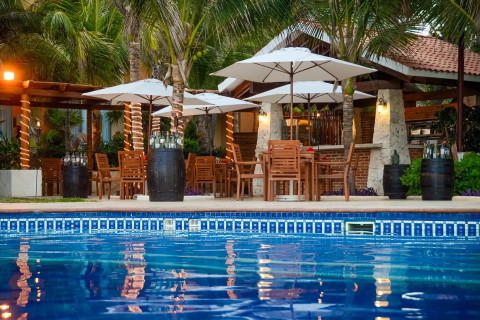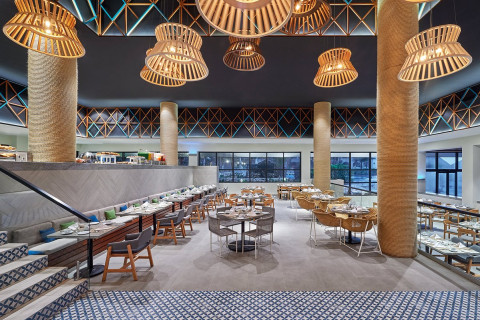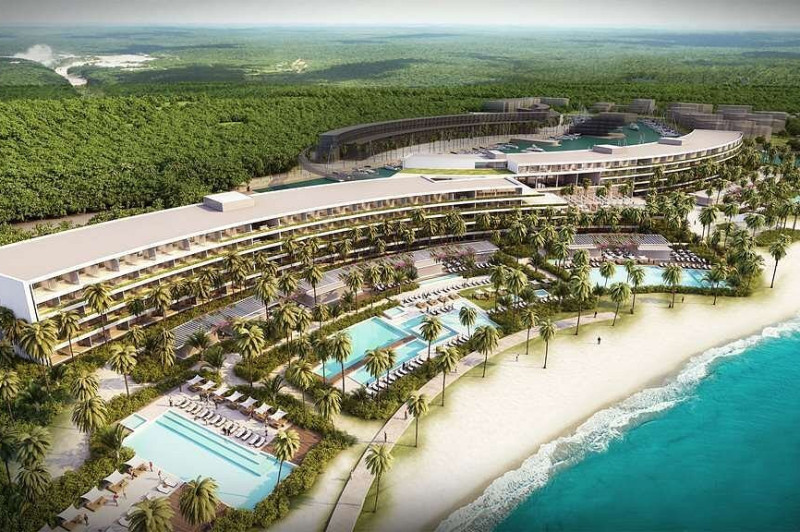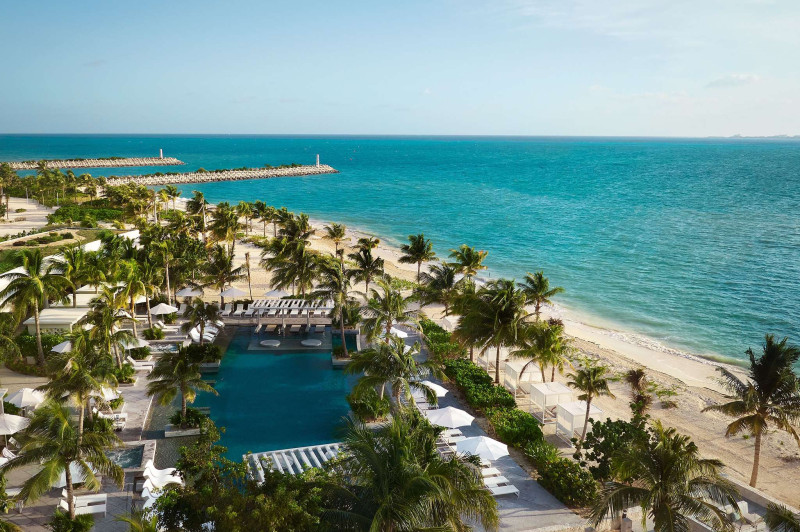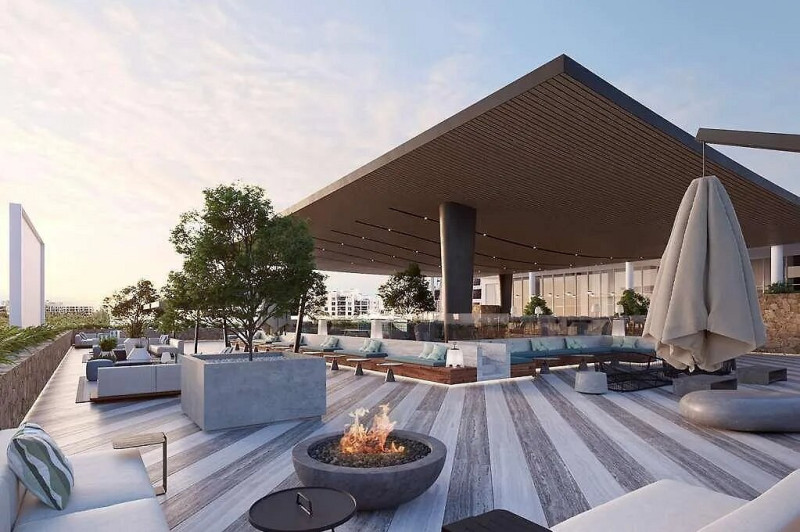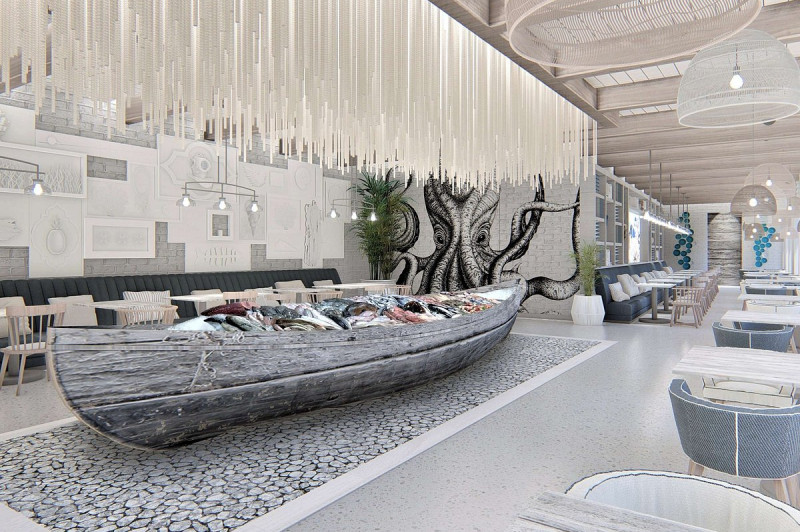- Home
- Past Conferences
- 2nd Small Molecule Activation Conference
2nd Small Molecule Activation Conference
20 May - 23 May 2016
Cancun, Mexico
Early Bird - Expired • Talk Submission - Expired • Poster Submission - Expired • Registration & Payment Deadline - Expired
Report
The second Fusion conference on Small Molecule Activation took place in Cancun Mexico, from 20th – 23rd May 2016. The meeting was chaired by Christian Limberg (Humboldt-Universität zu Berlin, Germany).
The first day was dedicated to dioxygen activation, including systems operating homogeneously, heterogeneously, or in biology. Kenneth Karlin (Johns Hopkins University, plenary), Franc Meyer (Georg-August-University), and Jean-Philip Lumb (McGill University) spoke about biomimetic and bioinspired copper chemistry and Pieter Vanelderen (KU Leuven) pointed out the similarities to copper units bound at the surfaces of silicate materials. Molecular models for metal sites on silicates were discussed by Marie-Louise Wind (Humboldt-Universität zu Berlin), and Karen Goldberg (University of Washington) provided insights into the proceedings occurring when bonds between late-metal ions and organic residues come into contact with O2. O2 activation at molecular first row transition metal compounds was reported by Christine McKenzie (University of Southern Denmark), while Grit Daniela Straganz (Technische Universität Graz) dealt with natural paragons, namely iron enzymes. Finally, Victor Adamian (BP Petrochemicals) talked about the mechanism of one of the most important homogeneously catalysed industrial processes utilizing O2 as the oxidant.
The morning of day 2 focused on the utilization of CO2 and CO for the synthesis of value-added products. Etsuko Fujita Brookhaven National Laboratory gave a plenary lecture on thermal and photochemical CO2 conversion; the latter formed also the topic of the lecture given by Matthias Schwalbe (Humboldt-Universität zu Berlin). Didier Bourissou (Paul Sabatier University) outlined how the concept of frustrated Lewis-pairs can be exploited for CO2 activation. Holger Dobbek (Humboldt-Universität zu Berlin) explained how it is realized in enzymes and Yunho Lee (KAIST) presented biomimetic model studies. CO cleavage and coupling was discussed by Theodor Agapie (Caltech) and mimics of reactive intermediates in catalytic processes mediated by transition-metal CO complexes were presented by Josh Figueroa (University of California, San Diego).
After a period of leisure time in a beautiful environment the scientific part of the day continued by lectures about N2 activation and reactive nitrogen species. Binding and activation of the latter formed the topic of talks given by Christine Thomas (Brandeis University), Kallol Ray (Humboldt-Universität zu Berlin) and Bas de Bruin (University of Amsterdam), and a plenary lecture given by Paul Chirik (Princeton University) addressed the interconversion of ammonia with its elements. Binding and activation of dinitrogen formed the topic in the presentations of Andrew Ashley (Imperial College London), Liang Deng (Shanghai Institute of Organic Chemistry), and Leslie Murray (University of Florida).
The next morning started with a plenary lecture given by Marc Fontecave (College de France) discussing CO2 reduction by molecules and solids followed by a talk of Cameron Jones (Monash University) outlining how main-group element complexes can activate small molecules. The activation of peroxides formed the focus of presentations given by Christopher Scarborough (Emory University) and Anna Company (Universitat de Girona). Stefan Roggan (Bayer Technology Services) presented results concerning the activation of chlorine for the synthesis of phosgene. Again the afternoon remained free before the program continued with lectures concerning the conversion of hydrocarbons. Matthias Tamm (Technische Universität Braunschweig) and Adam Veige (University of Florida) talked about alkine metathesis and oligomerisation, George Britovsek (Imperial College London) about olefin oligomerization and T. Brent Gunnoe (University of Virginia) about olefin hydroarylation. There followed the poster session and a very enjoyable Gala dinner including the awarding of the poster prizes.
The last day started with a plenary lecture by Zhaomin Hou (RIKEN) on the activation of hydrocarbons and dihydrogen followed by a presentation by Ronny Neumann (Weizmann Institute of Science) on the oxidation of arenes and alkylarenes by an electron transfer-oxygen transfer (ET-OT) mechanism. Robert Wolf (Universität Regensburg) reported how the oxidation of C-H bonds with O2 can be reached using light. The activation of CO2 and its utilization were the topic of talks given by Arjan Kleij (ICIQ) and Fabian Dielmann (University of Münster), and the program was concluded by an oral contribution that had been selected among the submitted posters: Eynat Haviv (Weizmann Institute of Science) talked about the photoelectrochemical reduction of CO2.
Hence, the conference gathered excellent scientists from all over the world covering a wide range of small molecule activation. It thus revealed common principles, prerequisites for catalysis and current trends/frontiers.
The conference venue allowed for a very relaxed atmosphere for discussion, networking, and setting up collaborations. Due to the high quality of the speakers and their lectures, they received the unshared attention of all participants – despite the temptations waiting outside the lecture halls.
The representatives of Fusion on site were most professional, helpful and reliable and at the same time pleasant to be with; all participants were very impressed with the high organization level of the meeting. There was general agreement among the participants that a third meeting should be organized for 2018 on the same topic, as progress is rapid in this field, which forms the basis of an efficient exploitation of our resources.
The meeting was sponsored by the journal Inorganic Chemistry (American Chemical Society) as well as by the Publisher Wiley-VCH.
Synopsis
Following the success of the first SMA conference in Chicago, which took place in July 2014 we are delighted to be organising a second series.
Small molecules are constituents of the air we breathe (e.g. N2, O2, CO2) and take part in element cycles and various metabolic processes. Further representatives (e.g. H2, CO, CH4) are produced/converted in nature under anaerobic conditions or in industrial processes on large scales. Hence, small molecules such as those mentioned are readily accessible and comparatively inexpensive, so that it is highly desirable to include them into syntheses of value-added products or to use them as reservoirs of chemical energy (fuels). However, at the same time they are typically quite thermodynamically stable, so that their utilization requires an activation step. The topic of this conference will thus be concerned with various aspects of small molecule activation, with a focus on molecular insights. It provides a stimulating and interdisciplinary environment for both senior scientists and young researchers to discuss latest progress in the field.
Key Sessions
- H2 Activation
- N2 Activation
- NxOy Activation
- O2 Activation
- H2O2 Activation
- Reactive NxHy Species
- COx Chemistry
- CxHy Conversion
2016 SMA Poster Prize
We will be providing a prize to the best young investigator talk (A Wiley book and $300) and further prizes for the two best posters (1st- a Wiley book and $150, 2nd Place- a Wiley book). We are also delighted to offer one poster presenter an opportunity to give a short talk.
Confirmed Plenary Speakers
Paul Chirik (Princeton University)
EXPLORING CARBON NEUTRAL METHODS FOR THE INTERCOVERSION OF AMMONIA WITH ITS ELEMENTS
Marc Fontecave (Collège de France)
CATALYSTS FOR CO2 REDUCTION: FROM MOLECULES TO SOLIDS
Etsuko Fujita (Brookhaven National Laboratory)
CO2 HYDROGENATION AND FORMIC ACID DEHYDROGENATION BY HALF-SANDWICH CP*IR COMPLEXES WITH PROTON-RESPONSIVE LIGANDS IN WATER
Zhaomin Hou (RIKEN Center for Sustainable Resource Science)
ACTIVATION AND TRANSFORMATION OF H2, N2 AND CO2 BY TRANSITION METAL COMPLEXES
Kenneth Karlin (Johns Hopkins University)
COPPER AND HEME-COPPER DIOXYGEN BINDING, STRUCTURES AND REACTIVITY
Confirmed Invited Speakers
Theodor Agapie (California Institute of Technology)
CLEAVAGE AND COUPLING OF CO WITH MOLYBDENUM COMPLEXES SUPPORTED BY LIGANDS WITH PENDANT ARENE MOIETIES
Andrew Ashley (Imperial College London)
TEACHING OLD COMPOUNDS NEW TRICKS: EFFICIENT N2 FIXATION BY SIMPLE Fe(N2)(DIPHOSPHINE)2 COMPLEXES
Karen Goldberg (University of Washington)
REACTIONS OF LATE TRANSITION METAL ORGANOMETALLIC COMPLEXES WITH MOLECULAR OXYGEN
Franc Meyer (Georg-August-Universität Göttingen)
BIOINSPIRED DIOXYGEN ACTIVATION AT HIGHLY PREOGANIZED DICOPPER SITES
Ronny Neumann (Weizmann Institute of Science)
A VANADIUM SUBSTITUTED POLYOXOMETALATE, H5PV2Mo10O40 AS A CATALYST FOR ELECTRON TRANSFER-OXYGEN TRANSFER OXIDATIONS. A UNIQUE COMPOUND FOR UNIQUE TRANSFORMATIONS
Christopher Pickett (University of East Anglia)
PHOTOELECTROCATALYSIS AT P-TYPE SILICON: CO2 REDUCTION, H2 GENERATION AND PHOTOELECTROSYNTHESIS OF AMMONIA
Confirmed Invited Short Talks
Victor Adamian (BP)
OXYGEN AND HYDROCARBON ACTIVATION IN COMMERCIAL OXIDATION OF PARA-XYLENE TO TEREPHTHALIC ACID
Didier Bourissou (Université Paul Sabatier)
CO2 FIXATION/TRANSFORMATION WITH PHOSPHINE-BORANES, PHOSPHINE-ALANE PT COMPLEXES AND NON-INNOCENT PD PINCER COMPLEXES
George Britovsek (Imperial College London)
ETHYLENE OLIGOMERIZATION BEYOND SCHULZ-FLORY DISTRIBUTIONS
Bas de Bruin (University of Amsterdam)
CATALYTIC RADICAL-TYPE TRANSFORMATIONS;
CATALYTIC REACTIVITY OF COII & ‘CARBENE AND NITRENE RADICALS’
Anna Company (Universitat de Girona)
SPECTROSCOPIC STUDIES AND OXIDIZING REACTIVITY OF TWO HIGH-VALENT Ni-OXYGEN SPECIES
Liang Deng (Shanghai Institute of Organic Chemistry)
LOW-COORDINATE LOW-VALENT IRON AND COBALT COMPLEXES WITH NHC LIGATION: SYNTHESIS, REACTIVITY, AND THEIR APPLICATIONS IN DINITROGEN ACTIVATION
Holger Dobbek (Humboldt-Universität zu Berlin)
CO/CO2 ACTIVATION BY HETEROMETALLIC NI ENZYMES
Josh Figueroa (University of California-San Diego)
SUBSTRATE ACTIVATION AND DYNAMICS BY TRANSITION METAL ISOCYANIDES
T. Brent Gunnoe (University of Virginia)
TRANSITION METAL CATALYZED OLEFIN HYDROARYLATION: NEW ROUTES FOR THE SYNTHESIS OF ALKYL AND VINYL ARENES
Cameron Jones (Monash University)
THE STABILIZATION AND "TRANSITION METAL-LIKE REACTIVITY OF LOW OXIDATION STATE/LOWCOORDINATION NUMBER P-BLOCK COMPLEXES
Arjan Kleij (ICIQ)
SMALL MOLECULE CATALYSIS USING CO2: ACCESS TO VALUABLE ORGANIC MOTIFS
Yunho Lee (KAIST)
SMALL MOLECULE TRANSFORMATION AT A LOW-VALENT METAL CENTER SUPPORTED BY A PEP PINCER LIGAND
Jean-Philip Lumb (McGill University)
DRIVING SYNTHESIS BY OXIDATION
Christine McKenzie (University of Southern Denmark)
SELECTIVELY HARNESSING THE POTENTIAL REACTIVITY OF O2
Leslie Murray (University of Florida)
SYNTHESIS AND REACTIVITY OF TRIMETALLIC COMPLEXES
Stefan Roggan (Bayer Technology Services)
BENT CARBON SURFACE MOIETIES AS ACTIVE SITES ON CARBON CATALYSTS FOR PHOSGENE SYNTHESIS
Chris Scarborough (Emory University)
Bert Sels (KU Leuven)
REACTIVE OXYGEN SPECIES IN TMI-ZEOLITES
Grit Daniela Straganz (Technische Universität Graz)
ENZYMATIC MONONUCLEAR NONHEME FE(II) CENTERS: THE ROLE OF THE PROTEIN ENVIRONMENT IN TUNING O2 DEPENDENT CATALYSIS
Matthias Tamm (Technische Universität Braunschweig)
CATALYTIC ALKYNE AND DIYNE METATHESIS
Christine Thomas (Brandeis University)
APPLICATIONS OF HETEROBIMETALLIC COMPLEXES TO THE ACTIVATION OF SMALL MOLECULES SUCH AS CO2 AND HYDRAZINE
Adam Veige (University of Florida)
TRIANIONIC PINCER LIGANDS AND THEIR ROLE IN METAL CATALYZED CYCLIC POLYMER SYNTHESIS
Robert Wolf (Universität Regensburg)
BENZYLIC C−H BOND OXYGENATION AND OXIDATIVE CHLORINATION BY FLAVIN PHOTOCATALYSIS
Target Audience
Researchers concerned with the binding and conversion of small molecules at metal centres.
Confirmed Speakers
Plenary Speakers
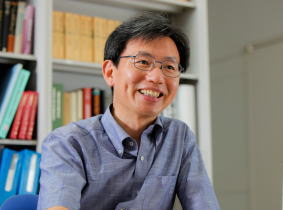
Zhaomin Hou
Group Director, RIKEN Center for Sustainable Resource Science
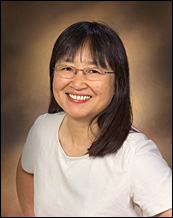
Etsuko Fujita
Senior Chemist, Group Leader, Brookhaven National Laboratory
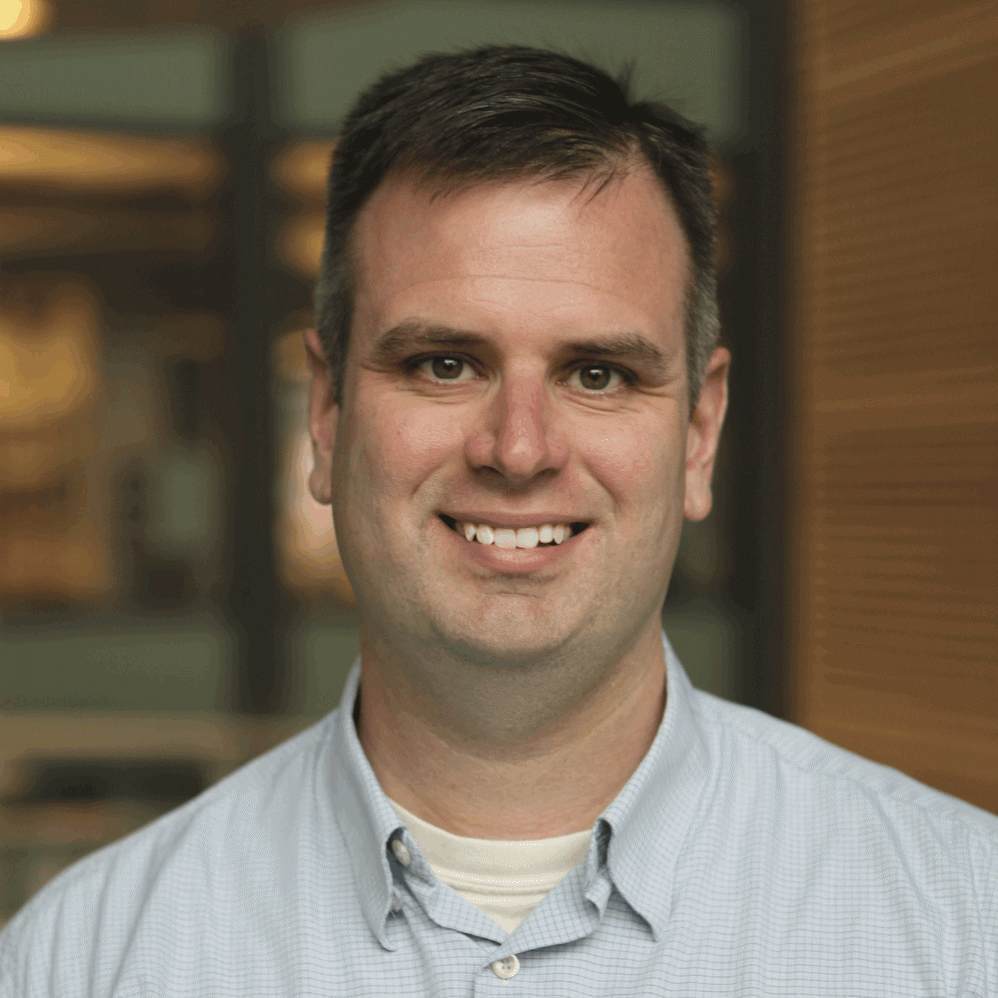
Paul Chirik
Edwards S Sanford Professor, Princeton University
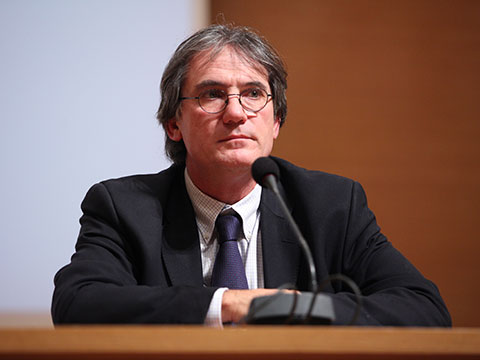
Marc Fontecave
Professor, College de France

Kenneth KARLIN
Professor of Chemistry, Johns Hopkins University
Invited Speakers
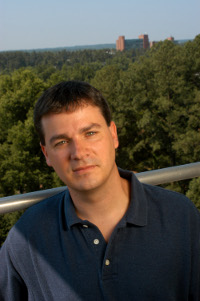
Thomas Gunnoe
Professor, University of Virginia
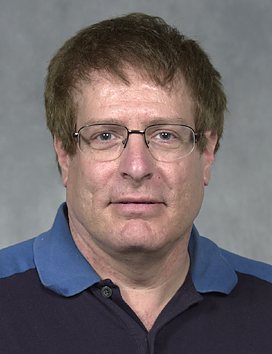
Ronny Neumann
Principal Investigator, Weizmann Institute of Science
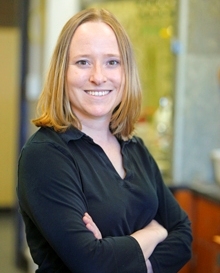
Christine Thomas
Associate Professor, Brandeis University
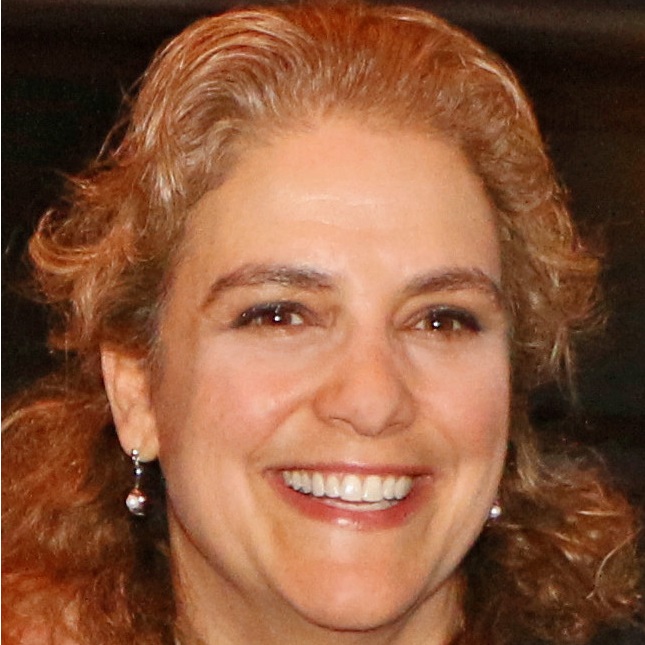
Karen Goldberg
Professor, University of Washington
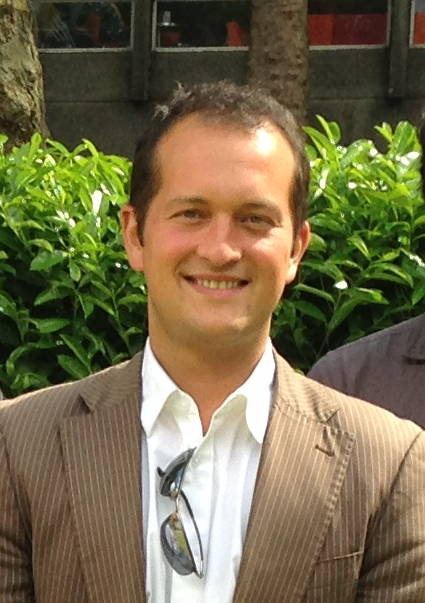
Andrew Ashley
Royal Society University Research Fellow, Department of Chemistry, Imperial College London
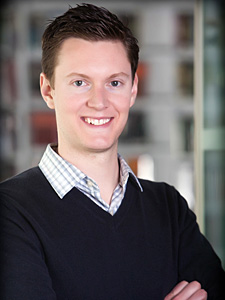
Christopher Scarborough
Assistant Professor, Emory University
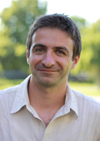
Didier Bourissou
CNRS Research Director, Paul Sabatier University

Christine McKenzie
Professor, University of Southern Denmark
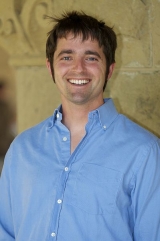
Jean-Philip Lumb
Assistant Professor, McGill University
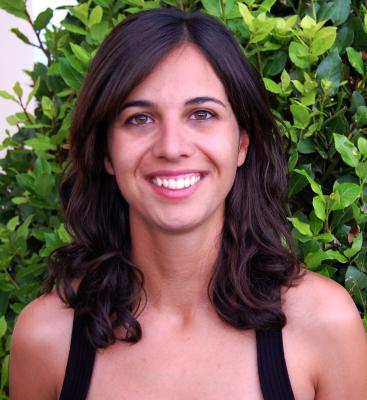
Anna Company
RyC Researcher, Universitat de Girona
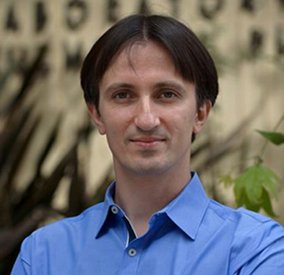
Theodor Agapie
Professor, Caltech
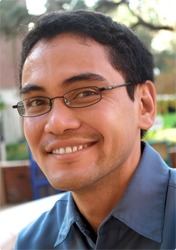
Leslie Murray
Assistant Professor, University of Florida
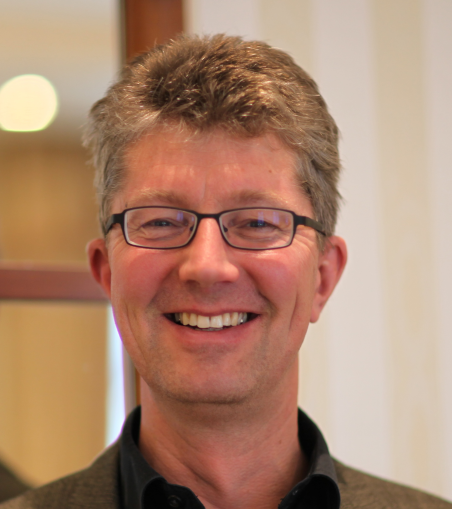
Franc Meyer
Professor, Georg-August-University
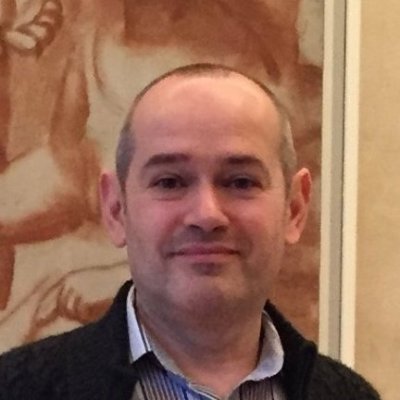
Victor Adamian
Senior Scientist, BP Petrochemicals
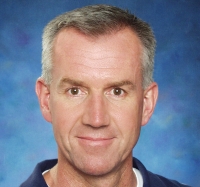
Cameron Jones
Professor, Monash University
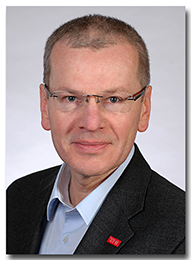
Matthias Tamm
Professor, Technische Universitaet Braunschweig
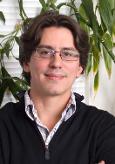
Joshua Figueroa
Associate Professor, University of California, San Diego
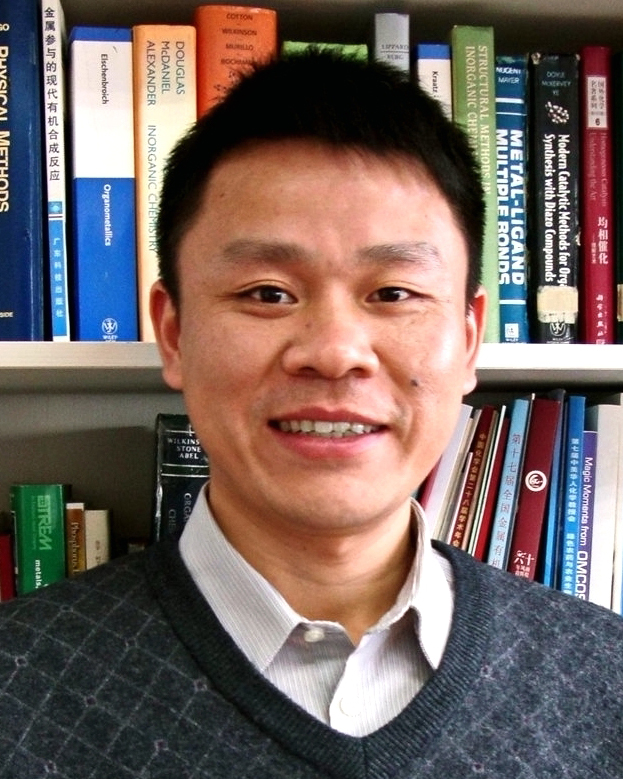
Liang Deng
Professor, Shanghai Institute of Organic Chemistry, Chinese Academy of Sciences
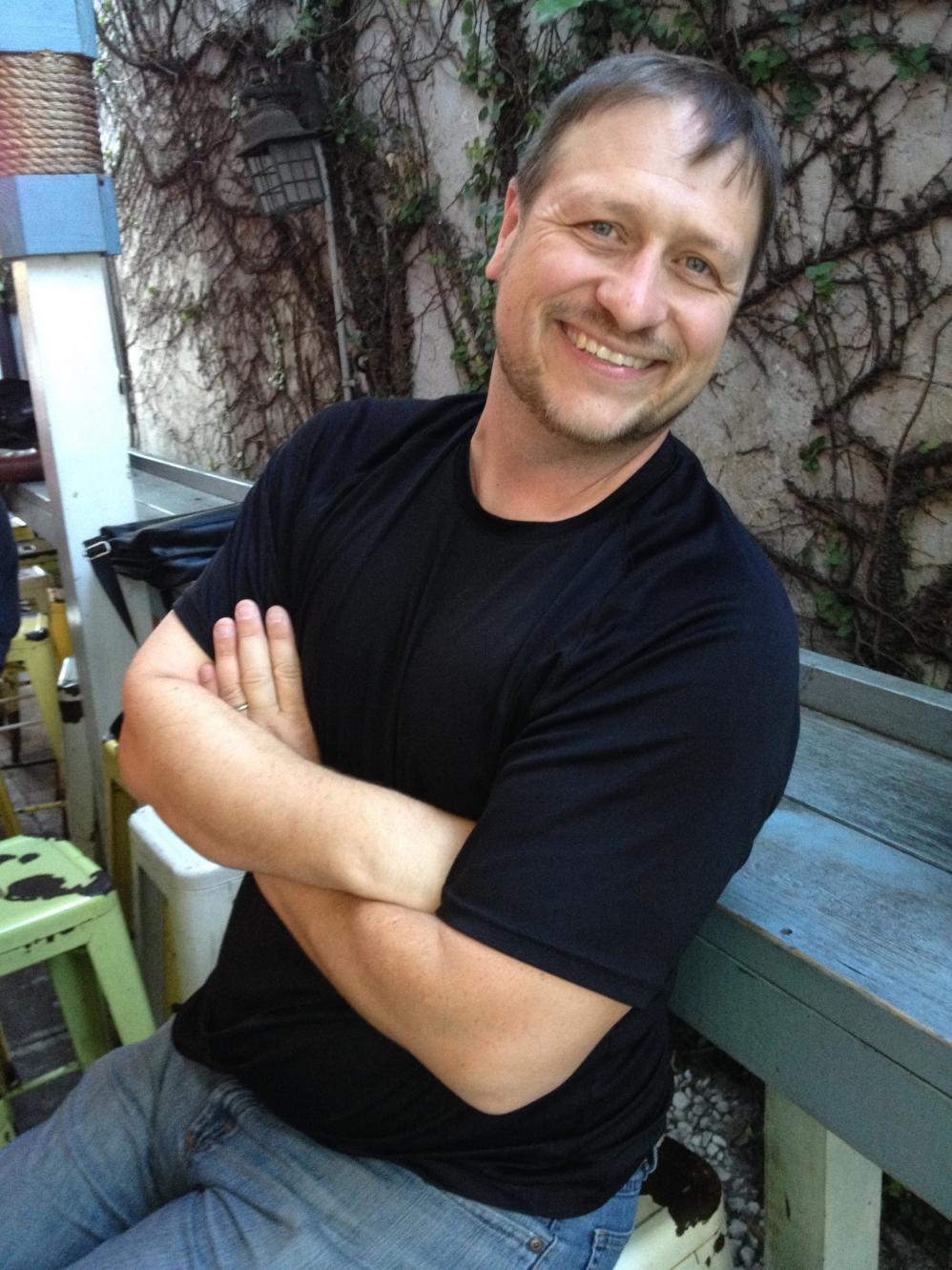
Adam Veige
Associate Professor, University of Florida
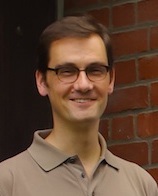
Holger Dobbek
Professor, Humboldt-Universität zu Berlin
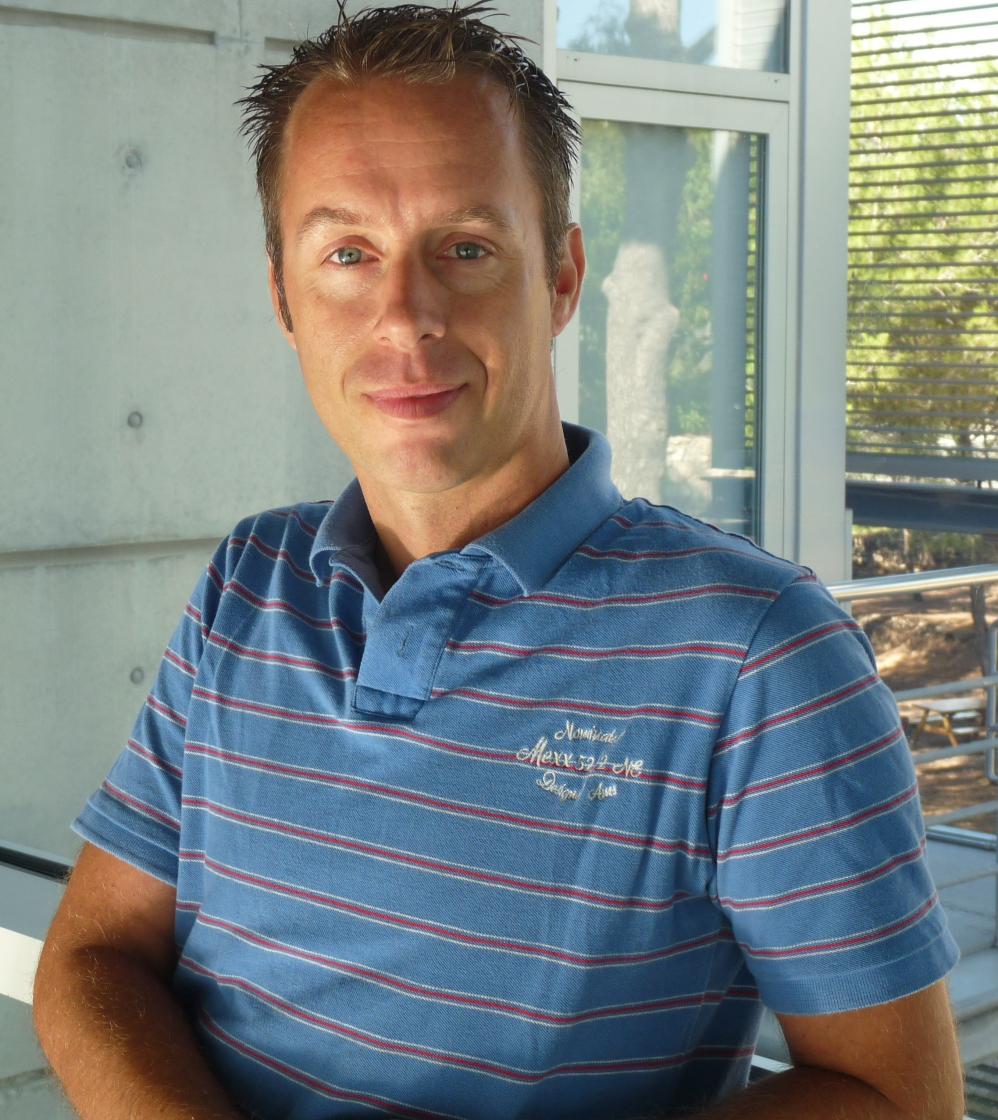
Arjan Kleij
ICIQ Group Leader & ICREA Professor, ICIQ
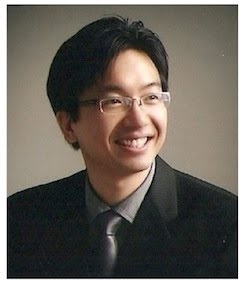
Yunho Lee
Associate Professor , KAIST
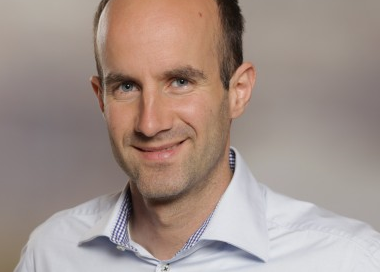
Stefan Roggan
R&D Manager, Bayer Technology Services
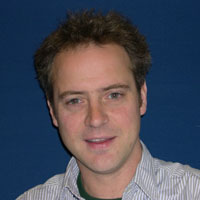
George Britovsek
Reader in Catalysis, Imperial College London
.jpg)
Bas de Bruin
professor , University of Amsterdam
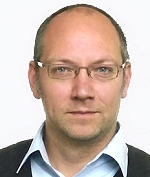
Bert Sels
professor, KU Leuven
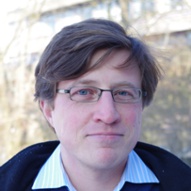
Robert Wolf
Associate Professor, University of Regensburg
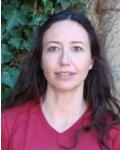
Grit Straganz
Principal Investigator, Group Leader, Graz University
Programme
Friday 20th May 2016 |
||
|
13:00 – 14:00 |
Registration |
|
|
13:00 – 14:00 |
Welcome Lunch *Kalmia Buffet Restaurant* |
|
|
14:00 – 14:15 |
Opening Comments |
|
|
O2 Activation |
||
|
14:15 – 14:55 |
Kenneth Karlin |
COPPER AND HEME-COPPER DIOXYGEN BINDING, STRUCTURES AND REACTIVITY |
|
14:55 – 15:20 |
Bert Sels |
REACTIVE OXYGEN SPECIES IN TMI-ZEOLITES |
|
15:20 – 15:45 |
Jean-Philip Lumb |
DRIVING SYNTHESIS BY OXIDATION |
|
15:45 – 16:20 |
Franc Meyer |
BIOINSPIRED DIOXYGEN ACTIVATION AT HIGHLY PREOGANIZED DICOPPER SITES |
|
16:20 – 16:50 |
Refreshments |
|
|
16:50 – 17:15 |
Christine McKenzie |
SELECTIVELY HARNESSING THE POTENTIAL REACTIVITY OF O2 |
|
17:15 – 17:40 |
Victor Adamian |
OXYGEN AND HYDROCARBON ACTIVATION IN COMMERCIAL OXIDATION OF PARA-XYLENE TO TEREPHTHALIC ACID |
|
17:40 – 18:15 |
Karen Goldberg |
REACTIONS OF LATE TRANSITION METAL ORGANOMETALLIC COMPLEXES WITH MOLECULAR OXYGEN |
|
18:15 – 18:40 |
Grit Daniela Straganz |
ENZYMATIC MONONUCLEAR NONHEME Fe(II) CENTERS: THE ROLE OF THE PROTEIN ENVIRONMENT IN TUNING O2 DEPENDENT CATALYSIS |
|
18:40 – 18:55 |
Marie-Louise Wind |
ACTIVATION OF SMALL MOLECULES BY CHROMIUM SILOXIDES |
|
18:55 |
Dinner at Leisure & Free Time |
|
Saturday 21st May 2016 |
||
|
07:00 – 08:30 |
Breakfast |
|
|
CO2 and CO Conversion |
||
|
08:30 – 09:10 |
Etsuko Fujita |
CO2 HYDROGENATION AND FORMIC ACID DEHYDROGENATION BY HALF-SANDWICH CP*IR COMPLEXES WITH PROTON-RESPONSIVE LIGANDS IN WATER |
|
09:10 – 09:25 |
Matthias Schwalbe |
PHOTOCHEMICAL CO2 REDUCTION CATALYZED BY MONO- AND DINUCLEAR PHENANTHROLINE-EXTENDED TETRAMESITYL PORPHYRIN COMPLEXES |
|
09:25 – 10:00 |
Theodor Agapie |
CLEAVAGE AND COUPLING OF CO WITH MOLYBDENUM COMPLEXES SUPPORTED BY LIGANDS WITH PENDANT ARENE MOIETIES |
|
10:00 – 10:25 |
Didier Bourissou |
CO2 FIXATION AND TRANSFORMATION WITH PHOSPHINE-BORANES, PHOSPHINE-ALANE PT COMPLEXES AND NON-INNOCENT PD PINCER COMPLEXES |
|
10:25 – 10:55 |
Refreshments & Group Photo |
|
|
10:55 – 11:20 |
Holger Dobbek |
CO/CO2 ACTIVATION BY HETEROMETALLIC NI ENZYMES |
|
11:20 – 11:45 |
Yunho Lee |
SMALL MOLECULE TRANSFORMATION AT A LOW-VALENT METAL CENTER SUPPORTED BY A PEP PINCER LIGAND |
|
11:45 – 12:10 |
Josh Figueroa |
SUBSTRATE ACTIVATION AND DYNAMICS BY TRANSITION METAL ISOCYANIDES |
|
12:10 – 16:00 |
Lunch at Leisure & Free Time |
|
|
N2 Activation and Reactive Nitrogen Species |
||
|
16:00 – 16:35 |
Andrew Ashley |
TEACHING OLD COMPOUNDS NEW TRICKS: EFFICIENT N2 FIXATION BY SIMPLE Fe(N2)(dIPHOSPHINE)2 COMPLEXES |
|
16:35 – 17:00 |
Christine Thomas |
APPLICATIONS OF HETEROBIMETALLIC COMPLEXES TO THE ACTIVATION OF SMALL MOLECULES SUCH AS CO2 AND HYDRAZINE |
|
17:00 – 17:25 |
Liang Deng |
LOW-COORDINATE LOW-VALENT IRON AND COBALT COMPLEXES WITH NHC LIGATION: SYNTHESIS, REACTIVITY, AND THEIR APPLICATIONS IN DINITROGEN ACTIVATION |
|
17:25 – 17:50 |
Leslie Murray |
SYNTHESIS AND REACTIVITY OF TRIMETALLIC COMPLEXES |
|
17:50 – 18:20 |
Refreshments |
|
|
18:20 – 19:00 |
Paul Chirik |
EXPLORING CARBON NEUTRAL METHODS FOR THE INTERCOVERSION OF AMMONIA WITH ITS ELEMENTS |
|
19:00 – 19:25 |
Bas de Bruin
|
CATALYTIC RADICAL-TYPE TRANSFORMATIONS; CATALYTIC REACTIVITY OF COII & ‘CARBENE AND NITRENE RADICALS’ |
|
19:25 – 19:40 |
Kallol Ray |
HIGH VALENT METAL OXO AND NITRENE CORES IN CHEMISTRY AND BIOLOGY |
|
19:40 |
Dinner at Leisure & Free Time |
|
Sunday 22nd May 2016 |
||
|
07:00 – 08:30 |
Breakfast |
|
|
Generation of Fuels and Value-added Products |
||
|
08:30 – 09:10 |
Marc Fontecave |
CATALYSTS FOR CO2 REDUCTION: FROM MOLECULES TO SOLIDS |
|
09:10 – 09:35 |
Cameron Jones |
THE STABILIZATION AND "TRANSITION METAL-LIKE REACTIVITY OF LOW OXIDATION STATE/LOWCOORDINATION NUMBER P-BLOCK COMPLEXES |
|
09:35 – 10:05 |
Refreshments |
|
|
Alternative Oxidants |
||
|
10:05 – 10:30 |
Christopher Scarborough |
COORDINATION CHEMISTRY OF HYDROGEN PEROXIDE |
|
10:30 – 11:05 |
Anna Company |
SPECTROSCOPIC STUDIES AND OXIDIZING REACTIVITY OF TWO HIGH-VALENT Ni-OXYGEN SPECIES |
|
11:05 – 11:30 |
Stefan Roggan |
BENT CARBON SURFACE MOIETIES AS ACTIVE SITES ON CARBON CATALYSTS FOR PHOSGENE SYNTHESIS |
|
11:30 – 17:00 |
Lunch at Leisure & Free Time |
|
|
Conversion of Unsaturated Hydrocarbons |
||
|
17:00 – 17:25 |
T. Brent Gunnoe |
TRANSITION METAL CATALYZED OLEFIN HYDROARYLATION: NEW ROUTES FOR THE SYNTHESIS OF ALKYL AND VINYL ARENES |
|
17:25 – 17:50 |
Adam Veige |
TRIANIONIC PINCER LIGANDS AND THEIR ROLE IN METAL CATALYZED CYCLIC POLYMER SYNTHESIS |
|
17:50 – 18:15 |
Matthias Tamm |
CATALYTIC ALKYNE AND DIYNE METATHESIS |
|
18:15 – 18:40 |
George Britovsek |
ETHYLENE OLIGOMERIZATION BEYOND SCHULZ-FLORY DISTRIBUTIONS |
|
18:40 – 19:40 |
Poster Session, Cocktails & Refreshments |
|
|
20:00 – 23:00 |
*Gala Dinner & Poster Awards* |
|
Monday 23rd May 2016 |
||
|
07:00 – 08:30 |
Breakfast |
|
|
Activation of CO2 and Hydrocarbons |
||
|
08:30 – 09:10 |
Zhaomin Hou |
ACTIVATION AND TRANSFORMATION OF H2, N2 AND CO2 BY TRANSITION METAL COMPLEXES |
|
09:10 – 09:45 |
Ronny Neumann |
A VANADIUM SUBSTITUTED POLYOXOMETALATE, H5PV2MO10O40 AS A CATALYST FOR ELECTRON TRANSFER-OXYGEN TRANSFER OXIDATIONS. A UNIQUE COMPOUND FOR UNIQUE TRANSFORMATIONS |
|
09:45 – 10:10 |
Robert Wolf |
BENZYLIC C−H BOND OXYGENATION AND OXIDATIVE CHLORINATION BY FLAVIN PHOTOCATALYSIS |
|
10:10 – 10:40 |
Refreshments |
|
|
10:40 – 11:05 |
Arjan Kleij |
SMALL MOLECULE CATALYSIS USING CO2: ACCESS TO VALUABLE ORGANIC MOTIFS |
|
11:05 – 11:20 |
Fabian Dielmann |
HIGHLY ELECTRON-RICH PHOSPHINES FOR THE ACTIVATION OF STRONG BONDS AND SMALL MOLECULES |
|
11:20 – 11:35 |
Eynat Haviv |
PHOTOELECTROCHEMICAL REDUCTION OF CO2 CATALYZED BY A DIRe(I) COMPLEX WITH A POLYOXOMETALATE ELECTROCHEMICAL SHUTTLE |
|
11:35 – 11:50 |
Closing Comments |
|
Supported by
Venue & Location
Fiesta Americana Condesa
This stylish hotel features contemporary Mexican architecture, including one of the largest and most impressive thatched-roof "palapas" in the entire country. There are cultural activities, arts and crafts and sports programs to keep you constantly entertained, plus time to relax and enjoy the Mayan culture, soak up the Caribbean sunshine and revel in the international ambiance that settles in after the sun goes down.
Throughout your stay delegates will enjoy a full meal plan, inclusive of beverages. Take your pick from the aromatic Asian delights at Kaumbu, traditional fare at El Mexicano, delicious international cuisine at Kalmia Buffet or perhaps sample the sumptuous Italian dishes at Rosato. There are also several other dining opportunities such as the Cevichería, Pizzeria, Sushi Corner, pool and lounge bar areas. The Gala Night with either a Mayan or Caribbean theme takes place on the third evening of the conference with a mouth-watering feast of local cuisine, an open bar and amazing local entertainment. We welcome all delegates and their accompanying persons to the Gala Night – a truly fun filled night not to be missed!
Hotel Facilities
- Lagoon Pool
- Extensive Health Club and Spa
- Complimentary Wi-Fi in guest rooms and throughout hotel and conference areas
The Fiesta Americana Condesa, Cancun is the 2015 Winner of the Trip Advisor Certificate of Excellence and also received the Travellers Choice Award in 2014.
The remains of ancient Mayan cities are scattered throughout the Yucatan Peninsula and no trip to Cancun would be complete without a visit to these majestic temples and pyramids set amongst lush tropical vegetation. We will be working very closely with a reputable tour company who will be organising trips to Tulum, Chichen Itza, Coba and Xcaret to name a few, some of which may require a full day. Full day excursions will be arranged pre or post conference and may be on an individual or group booking so we would recommend booking extra nights to extend your stay as early as possible to avoid disappointment should these excursions be of interest to you and/or your party. For further information please contact us.
General Information
Venue Rating
★ ★ ★ ★ ★
Currency
US Dollar (USD)
Address
Fiesta Americana Condesa, Blvd.Kukulkán km 16.5 Zona Hotelera, Cancun, 77500 Mexico
Nearest Airport
Cancun International Airport
Location
Cancun is a delightful combination of natural beauty, islands, ecological reserves and white sandy beaches. However, besides sun, sand and sea, this destination also offers an infinite variety of underwater activities to choose from: the diving, snorkelling and fishing here are outstanding and you will find an undersea world packed with tropical fish that live on the second largest barrier reef in the world. Sports enthusiasts might choose one of the many eco-tourism activities, such as cycling or hiking through the tropical forest or kayaking through mangroves, or something a little more adventuresome, like zip lining through the treetops.
Apart from the more well-known ancient Mayan archealogical sites such as Tulum, Cobá and Chichén Itzá you may like to visit the Aktun Chen caverns, voted one of the Top 10 underwater walks by National Geographic described as a truly magical experience.
Gallery
View on FlickrIf you are interested in this meeting but not yet ready to register, you can sign up for updates here and our team will keep you updated regarding deadline reminders and grant opportunities relating to this meeting only.
If you're interested in sponsoring this conference please contact us.
Conference Manager

Jack Peters
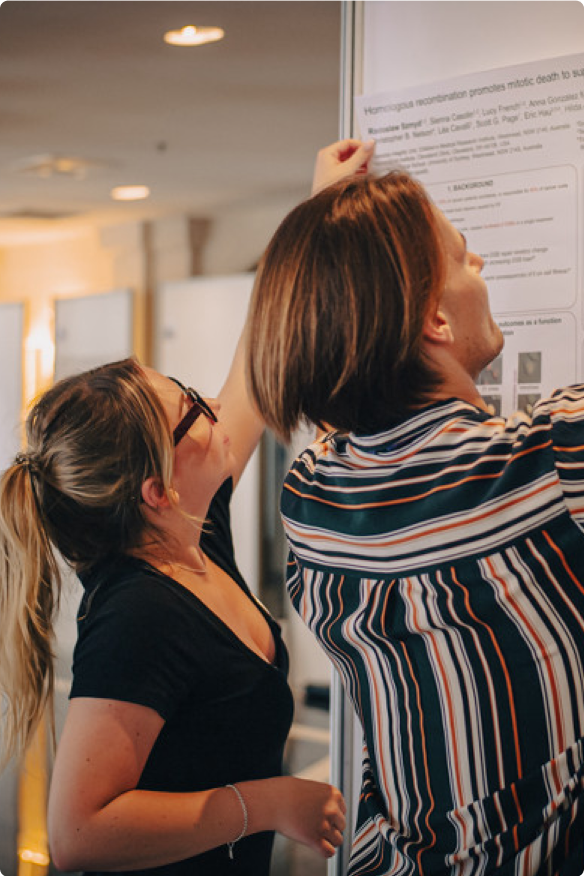

Need some help? Chat to the Fusion team today
As a family run business, our dedication runs deep. We’re committed to each other and, even more so, to every attendee’s experience, delivering a level of care and passion that’s truly unmatched.
